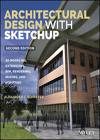Architectural Nonprofit Groups Grapple With Economic Woes
The Chicago-based Graham Foundation is the largest private architectural foundation in the United States. Since its 1956 founding, it has provided grants to many now iconic projects and publications, such as Rem Koolhaas’ Delirious New York, published in 1978, and more recently, the Studio Museum in Harlem’s 2007 exhibition, David Adjaye: Making Public Buildings. But in recent months, the nonprofit has felt the effects of the recession, particularly the ailing stock market.

“We are supported 100 percent by our endowment. We do no outside fundraising,” explains Sarah Herda, the foundation’s executive director. “Because of the economic condition, we have seen a reduction in the value of our endowment by about 23 percent.” The situation could be worse, she adds, “but it’s still quite a blow.”
The Graham Foundation is one of dozens of architectural organizations in North Americathat provide grants and fellowships, host panel discussions and exhibitions, and help frame the discipline of architecture. While employment figures and revenue reports can quantify the recession’s impact on the architectural profession, its impact on these nonprofit groups is less understood. But many do report that they face budget shortfalls. “We are not wholly dependent on one source of founding, but every one of our sources will likely be challenged,” says Rosalie Genevro, executive director of The Architectural League, a New York-based nonprofit that aims to advance the art of architecture through grants, competitions, events, and publications.
Despite budget challenges, these organizations are embarking on ambitious programs to promote the role of the architect within this new economic environment. “What these architectural organizations are doing now is more important than ever,” says Herda. “They are the first line of support for individuals in the field, working with architects to bring their work to the public.” They also can help deepen architectural discourse and further research initiatives.
New York’s Storefront for Art & Architecture is poised to engage this challenge. “We hope to encourage people to realize that you don’t need money for strong ideas,” says its executive director, Joseph Grima. Throughout 2009, the organization plans to present discussion forums for topical themes concerning the economic crisis. Grima adds that his organization is learning to be leaner: While it doesn’t have an endowment, it expects to be affected by budget cuts at the New York State Council on the Arts, one of its major funding sources. “We have always existed on small means and individual donors,” Grima says, “but we do need to be prepared to operate on less.”
The Canadian Centre for Architecture (CCA), which supports exhibitions, scholarships, and important collections of Modern architects, also is feeling the pinch. The Montreal-based organization operates to a large extent on private funding, and its endowment “has been impacted by the economic situation,” explains CCA director Mirko Zardini. He notes that recessions do have a silver lining. “This economic crisis will force us to think far ahead, to reflect more on the priorities, and to develop a new discourse on architecture,” Zardini says, referring to the CCA’s ambitions. Earlier this year, the organization presented the exhibition Actions: What You Can Do With the City, which showcased small-scale, tactical, urban interventions that demonstrated the ability to transform urban spaces without major budgets. “A crisis always has two sides: one, not very positive, and another, very positive,” says Zardini. “We can use this time to make architecture contribute more to the transformation of the contemporary city.”
That sentiment is echoed by Genevro. “I take very seriously the hard times that architects and designers are going through,” she says, “but this moment presents a collective opportunity to discuss issues of importance. I think we are very likely at the beginning of a new trajectory.”
Read more economic news in our Recession and Recovery special section.


